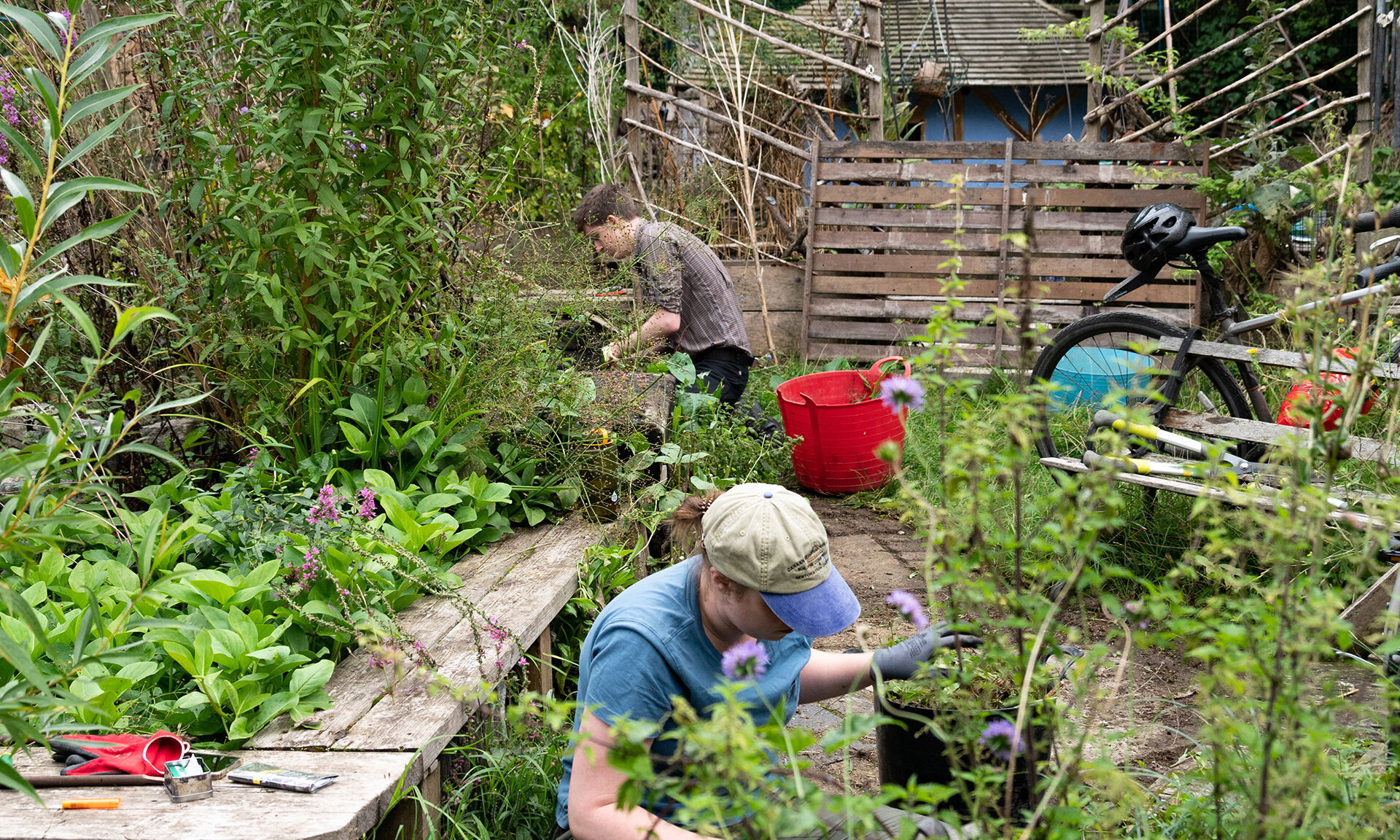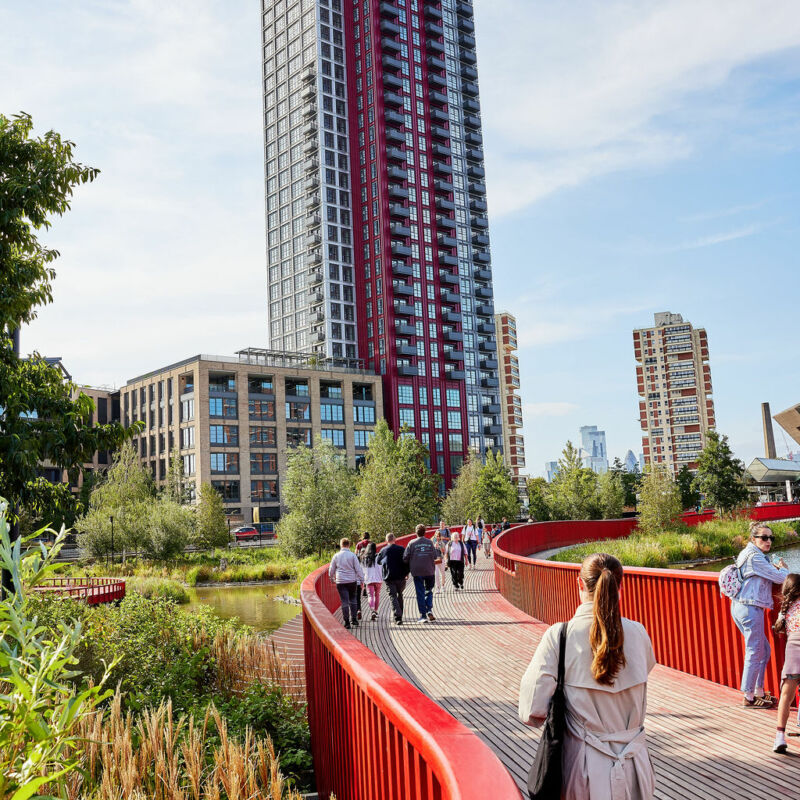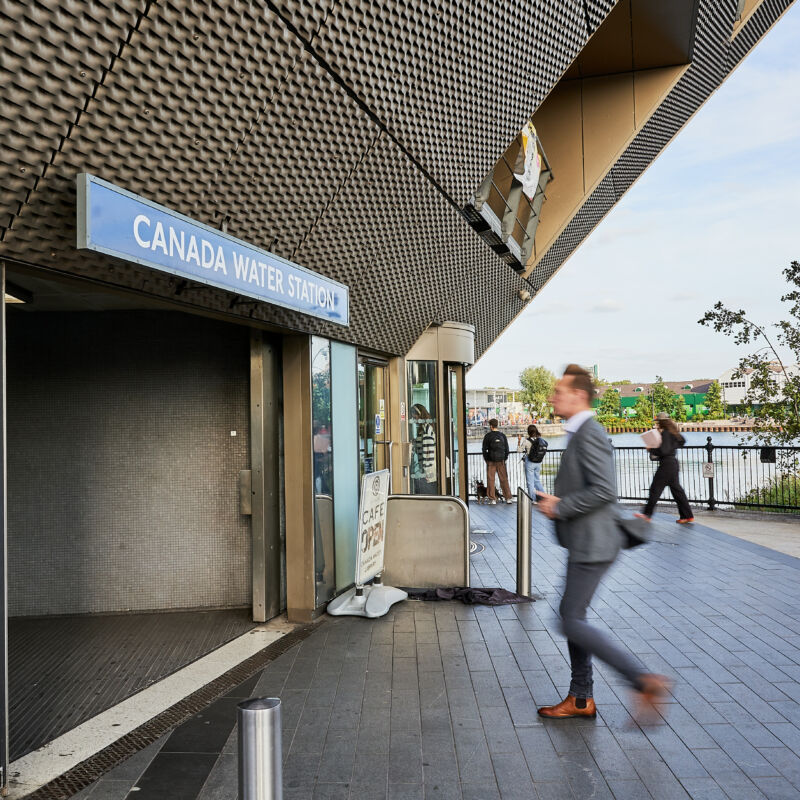Could you tell us how you’re collaborating with the team at Dockside?
Rebeka: We have an ongoing dialogue with the Dockside team, British Land, and the landscape architects involved in the projects. The goal is to create a joined-up landscape where nature and wildlife can thrive.
In practice, this means that the new green infrastructure at Canada Water needs to support the species that are already here. This is my focus, but at the same time, the planting also has to meet other criteria.
Inside the ecology park, it doesn’t matter if things require a bit of babying or extra maintenance. On the other hand, a communal planting scheme needs more structural and attractive plants that are less vulnerable to damage and easier to maintain.
It’s kind of a juggling act between form and function. There are a range of plants that the landscape architects can use. I make suggestions, like: “Have you considered this? It’s great for this type of butterfly.” So instead of planting for ‘autumn colour’, you’re asking, “What value will this be to wildlife? Will this tree be suitable for nesting and roosting? Will it provide a food source?”.
Dockside is a commercial quarter. Why would businesses be interested in ecology and biodiversity, and what are you doing to encourage engagement?
Rebeka: People need time out from their working day. Take lunchtime, for example, what’s nicer? A bench in a windswept square with nothing but buildings looming over you? Or a bench backing onto a bed of wildflowers surrounded by fruit trees and bird song? When people spend time outside and absorb the natural environment, they also start to engage with it.
Part of this is about education and awareness – communicating what we’re doing and why. This can be as simple as putting up information boards so people can identify what they’re seeing and hearing.
It can also be about inviting people to become involved. We run a volunteering program that’s become very popular with corporate teams. Last year, we had 2,000 volunteers working with us on everything from art projects to cutting shrubs, planting trees, and building natural play equipment. It’s a really rewarding experience; we’ve received so much positive feedback.
People who interact with nature on a daily basis are more likely to start thinking about our global natural environment and making lifestyle changes. It seems like such a small thing, but it has long-term and broad impacts.
The big benefit is that we will see a more cohesive community because that’s what happens when people engage with their local green spaces.
How do you feel about the future of this part of London?
Rebeka: I’m actually quite optimistic. Everyone here – the local community, Art-Invest, British Land, and the new people and businesses coming into Canada Water – we all have an opportunity to create something remarkable here and to leave a better legacy. Something where we can all turn around and say: “If you want to see an area that embodies London National Park City, come here.”
Stave Hill Ecology Park is looked after by The Conservation Volunteers. The park is open to the public at all times.












